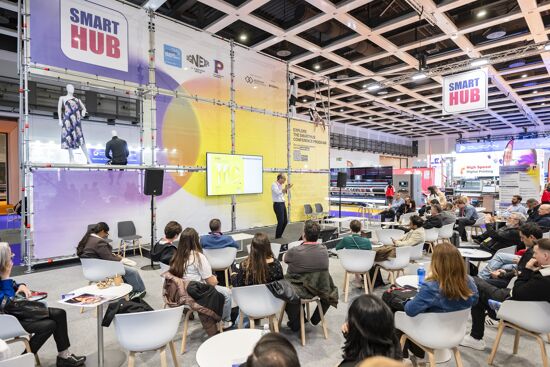Unlocking colourful possibilities of printing with white inks
White ink provides the opportunity to expand digital print and inkjet offering to include dark and unusual substrates and special effects.
A number of wide to superwide printers today include white ink as an additional colour enabling a new range of applications. However, it is important to understand the capabilities and limitations of white ink.
Many printers enable white ink as a pre‐ or post‐ colour only. This means that white ink can only be laid down in pre‐flood and spot or post‐flood and spot modes and are limited to two layers in a single pass. So the resulting range of applications can be limited
White makes way for new market opportunities
It is possible to use white ink in a variety of useful and creative ways—it can be printed as a solid area or applied as a tint or gradation. While some intended uses require no prepress intervention, some preparation is necessary for spot and shape white applications.
The prepress procedures are not complicated, but they do need to be done in a specific way to ensure success at the printer. “White under” can be used as a pre‐coat on coloured substrate. White undercoats allow use of a broader range of coloured and creative substrates.
This is a 3-layer print on neon green substrate. White ink is used under CMYK as a base and white ink shapes add creative detail.
“White over” as a post‐coat when printing on clear material is ideal for backlit printing. The white ink acts as a diffuser, spreading the light evenly for brighter, more evenly illuminated back‐lit displays.
Shape white printing as a pre‐ or post‐coat gives colours extra pop while allowing metallic or mirrored substrates to show through for striking results. Shape white enables the ability to utilise a greatly extended range of creative materials and substrates.
In Spot white mode, white ink prints as a 7th colour. In this example, the dress is printed in white ink on the metallic substrate. White areas in the file (0% CMYK) allow the metallic substrate to show through.
Dual Day/Night Applications
The following is a variation of the normal day/night backlit print. By creating a different file for the back layer, the front layer’s appearance is enhanced or changed when backlit. A white flood separates the two files and is designated at the printer.
The car example shows a schematic drawing when the lightbox is turned on
Dual Day/Night, “Hidden Message”
This technique can be used to show a hidden message and different graphic elements.
Two separate images were created from the same master file. The image on the left is the image that is visible during the daytime. The image on the right contains shading, colour gradients and text.
When backlit, the black areas block the light, darkening those areas to create a more dramatic look. The knockout text allows the light to come through, making it visible.
The middle layer is a white flood designated at the printer for maximum white ink opacity between the layers.
Dual Day/Night, Colour Change
This illustrates how this technique can easily be used to visually alter an image and create a colour change.
Two separate images were created from the same master file. The image on the left shows the model wearing “daytime” make-up.
The image on the right shows the model wearing “night-time” make-up. In the final print, backlighting the image adds density, changes the appearance of her make-up and alters the background colour.
The middle layer is a white flood designated at the printer for maximum white ink opacity between the layers.
All the subjects covered in this article can be reviewed in more detail by visiting the Fiery XF or Fiery ProServer online help resource within the Fiery XF client.
Subscribe to Select Magazine
This article is part of the EFI Select magazine. If you subscribe now, you will no longer have to worry about missing the next issue. You will receive an email with a link to the Select pages in FlipSnack format, from which you can check previous issues and even download the magazine if you wish.
Here you will find the latest edition.
Topics
Interested in joining our community?
Enquire today about joining your local FESPA Association or FESPA Direct
Recent news

Industry Experts Explore the Evolution of Smart Manufacturing in the Textile Industry
A FESPA SmartHUB roundtable at Personalisation Experience 2025 discussed smart manufacturing's transformative impact on the textile industry. Experts highlighted the shift to on-demand customisation, driven by digital printing, data analytics, and automation. Key takeaways included enhanced machine control, significant waste reduction through intelligent software and colour management, and improved sustainability via energy efficiency and near-shoring, ensuring agility and environmental responsibility in textile production.

FESPA 2025 gathers leading visionaries from across the speciality print industry in Berlin
FESPA Global Print Expo 2025, European Sign Expo and Personalisation Experience (6 – 9 May 2025, Messe Berlin, Germany) welcomed Visionaries from across the speciality print industry to shape the future of print, develop forward-thinking business strategies, and explore innovative ways to translate emerging industry trends into tangible growth opportunities.

Exploring Cutting-Edge Textile Printing Innovation with Adobe Print Engine 7
Adobe PDF Print Engine 7, launched at FESPA Global Print 2025, significantly advances textile printing. Debbie McKeegan shares how it automates non-white substrate management and RGB colour handling, expands colour gamuts with in-RIP multicolour transparency blending, and streamlines workflows for efficiency and sustainability. This update boosts customisation, reduces waste, and positions businesses at the forefront of digital print innovation.

FESPA Global Print Expo 2025 - Overall Highlights
FESPA Global Print Expo, Europe's leading print and signage exhibition returned to Messe Berlin from 6 - 9 May 2025.